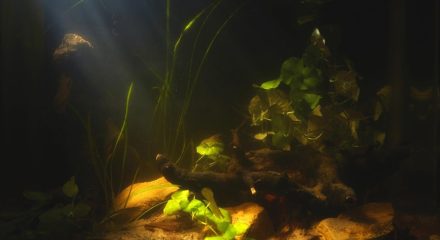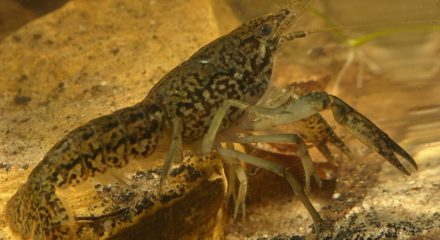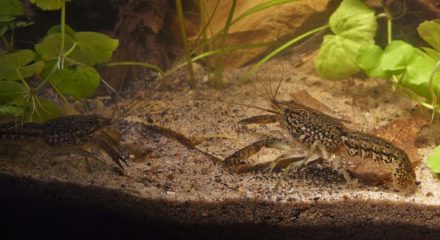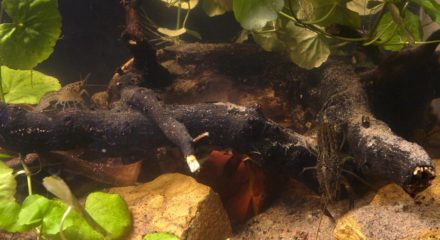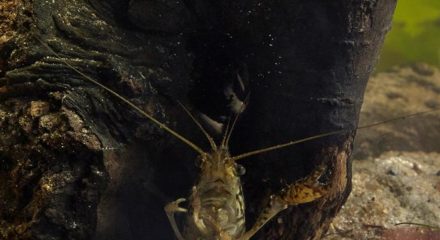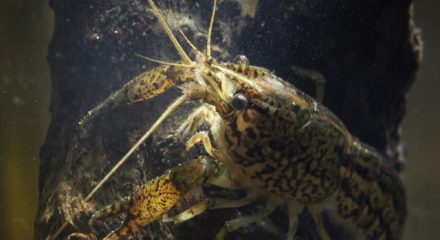Backwater of St. Johns River before sunset, Florida, North America
79th place in Biotope Aquarium Design Contest 2016
![]() Russia. Anna Romanchik
Russia. Anna Romanchik
Aquarium Volume: 40 L
Fish and invertebrates: Procambarus fallax
Plants list: Hydrocotyle leucocephala, Vallisneria americana
Biotope description: St. Johns River is the longest river in Florida. Its length is 499 km. The river is surrounded by marshes. Even during the day woods do not allow sunlight to penetrate into the creek and river banks, but the life here does not fade with the arrival of dusk. Procambarus fallax is a nocturnal residents, and go out of the shelter after dark. Crayfish live in water of medium hardness, as in the highly acidic and soft water of eternal mangrove and cypress swamps their shells do not form. In the creeks and tributaries of the St. Johns River there is a large number of leaves, roots, driftwood, where crayfish hide in the daytime. A method of breeding of Procambarus fallax, perhaps is the most interesting feature. Procambarus fallax are of same sex (female) and multiply by parthenogenesis: they do not need a male to give offsprings. The females bear eggs for about a month, periodically ventilating it with its legs. It looks very nice. At this time, virtually no crayfish comes from the shelter. Then about 50-80 small crustaceans come, which are virtually impossible to detect.
Fish and invertebrates: Procambarus fallax
Plants list: Hydrocotyle leucocephala, Vallisneria americana
Biotope description: St. Johns River is the longest river in Florida. Its length is 499 km. The river is surrounded by marshes. Even during the day woods do not allow sunlight to penetrate into the creek and river banks, but the life here does not fade with the arrival of dusk. Procambarus fallax is a nocturnal residents, and go out of the shelter after dark. Crayfish live in water of medium hardness, as in the highly acidic and soft water of eternal mangrove and cypress swamps their shells do not form. In the creeks and tributaries of the St. Johns River there is a large number of leaves, roots, driftwood, where crayfish hide in the daytime. A method of breeding of Procambarus fallax, perhaps is the most interesting feature. Procambarus fallax are of same sex (female) and multiply by parthenogenesis: they do not need a male to give offsprings. The females bear eggs for about a month, periodically ventilating it with its legs. It looks very nice. At this time, virtually no crayfish comes from the shelter. Then about 50-80 small crustaceans come, which are virtually impossible to detect.

